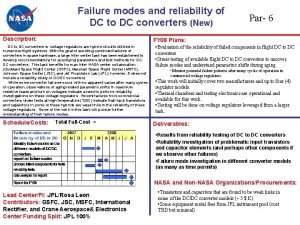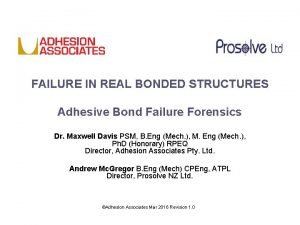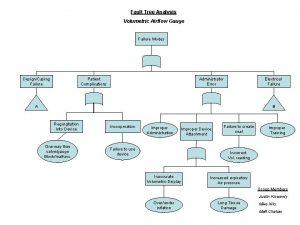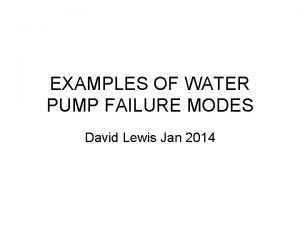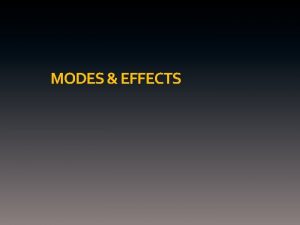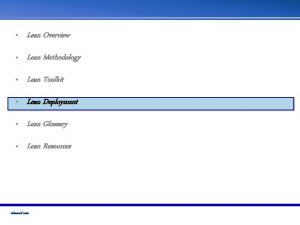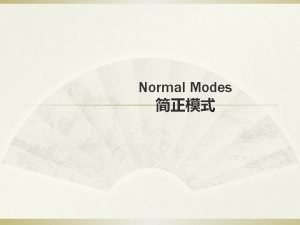Failure Modes and Effects Analysis Chapter 22 Lean







- Slides: 7

Failure Modes and Effects Analysis Chapter 22 Lean Six Sigma: Process Improvement Tools and Techniques Donna C. Summers © 2011 Pearson Higher Education, Upper Saddle River, NJ 07458. • All Rights Reserved.

Failure Modes and Effects Analysis • Failure Modes and Effects (FMEA) – Critically examine the system – Divide the system into its various components – Examine each individual component • Record the ways the component may fail • Rate potential degree of hazard – Examine all potential failures for each individual component and decide what effect the failures may have » Weakness: Human Error Component Missing » See additional notes Lean Six Sigma: Process Improvement Tools and Techniques Donna C. Summers © 2011 Pearson Higher Education, Upper Saddle River, NJ 07458. • All Rights Reserved.

Failure Modes and Effects Analysis • Failure Modes and Effects Analysis – Design FMEA’s • used to verify that a product has been properly designed to meet all of the customer’s requirements and that it can be manufactured at a target rate, cost, and yield. – Process FMEA’s • used to assess the adequacy of a process in producing a product. Lean Six Sigma: Process Improvement Tools and Techniques Donna C. Summers © 2011 Pearson Higher Education, Upper Saddle River, NJ 07458. • All Rights Reserved.

Failure Modes and Effects Analysis • What are Design FMEA’s used for? – To capture the relationship between: • • customer requirements and how a product can fail to meet these requirements and the effects of the failures and the problems with the design that cause the failures. – As a method to ensure that the design will be changed and tested so that the failures do not occur. Lean Six Sigma: Process Improvement Tools and Techniques Donna C. Summers © 2011 Pearson Higher Education, Upper Saddle River, NJ 07458. • All Rights Reserved.

Failure Modes and Effects Analysis • What are Process FMEA’s used for? – To identify the process and product controls that must be implemented to ensure that the product can be produced within specification. Lean Six Sigma: Process Improvement Tools and Techniques Donna C. Summers © 2011 Pearson Higher Education, Upper Saddle River, NJ 07458. • All Rights Reserved.

Failure Modes and Effects Analysis • What are Process FMEA’s used for? – To capture the relationship between • each process step and • the unacceptable process outputs that can be created at each step and • the effects of the unacceptable process outputs and • the causes of the unacceptable outputs and • how the unacceptable outputs will be either prevented or detected in the event that they occur. Lean Six Sigma: Process Improvement Tools and Techniques Donna C. Summers © 2011 Pearson Higher Education, Upper Saddle River, NJ 07458. • All Rights Reserved.

Failure Modes and Effects Analysis • Steps to Create an FMEA – Create a form similar to that shown in the chapter – Study the system, process, or part • • • What are the potential failure modes? What are the potential failure causes? What are the potential failure consequences? What are the existing controls? Identify Risk Priority Code – Severity – Probability of Occurrence • Analyze the document Lean Six Sigma: Process Improvement Tools and Techniques Donna C. Summers © 2011 Pearson Higher Education, Upper Saddle River, NJ 07458. • All Rights Reserved.



